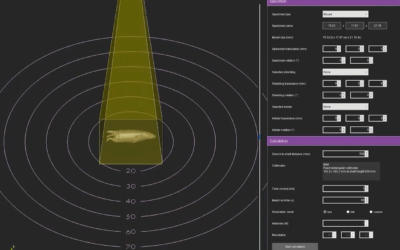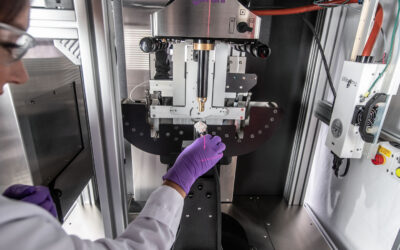Jonathan Kane, Applications Sales Specialist at Xstrahl Limited summarises the latest paper on SARRP.
The development and construction of clinical proton therapy centers has almost become the norm for any major cancer treatment center. Roughly 58 proton centers are currently operating throughout the world, and an estimated 52 (this number could be greater) are currently being built or are planned for construction. With the recent emergence of so many proton centers more so than ever, one would think the use of protons in cancer is a new form of treatment. However, the truth of the matter is it’s basically the opposite.
In 1946, physicist Robert R. Wilson Ph.D. first published the idea, techniques, and basic fundamentals of using protons in the treatment of cancer (Radiological Use of Fast Protons, Radiology 1946:47:487-91). The first attempts to use protons as treatment for cancer in humans was not attempted until the 1950s at the University of California Lawrence Berkley Laboratory. However, due to lack in technology and low energy accelerators, protons were not able to penetrate deep into the body and limited areas of treatment. About 40 years went by, and in 1990 the Loma Linda University Medical Center applied a dedicated proton medical device which incorporated a small rotational gantry (The proton treatment center at Loma Linda University Medical Center: rationale for and description of its development. Int J Radiat Oncol Biol Phys. 1992). The development of this system marked the beginning of a movement in cancer treatment to incorporate proton therapy as a treatment option for patients. Since then, systems have adapted new technologies like 4D-CT and image guidance for increased targeting and accuracy. Despite these integral advancement, the underlying cellular/molecular interactions, biological mechanisms, as well as effects on tumors and normal tissue are poorly understood.
Recently, an initiative by the radiation oncology department at the University of Washington, led by medical physicist Eric Ford, set out to gain a better understanding of the biological interactions behind proton therapy. With the help of Xstrahl through modifications of the SARRP design, Ford and his group were able to integrate their SARRP into the proton beam line. Since the existing cyclotron is one of low energy and originally established for neutron therapy, the beam was easily attenuated to accommodate small animal research. The resultant system has been termed the UW Precision Preclinical Particle Radiotherapy Platform (PPPRP). The initial study was proof of concept based and yielded a publication in Physics in Medicine & Biology at the end of 2016. Titled “An image-guided precision proton radiation platform for preclinical in vivo research”, Ford et al. investigated the feasibility of integrating the SARRP into the proton beam line (image above), beam properties comparing the actual beam and monte carlo simulations, beam uniformity in the field, isocenter accuracy, Bragg Peak detection, and dose to collimator distance.
The authors conclude that their “dosimetric characterization and Monte Carlo modeling demonstrate that it is possible to adapt an existing cyclotron system to deliver a proton beam that is suitable for radiobiology research. In addition, they have shown that this proton beam can be coupled to the SARRP system to deliver an image-guided proton therapy beam which is well-suited to preclinical in vivo studies. Overall the resulting system can help advance the radiobiological study of proton therapy and support the translation of laboratory findings into the clinic.”
In the world of preclinical radiobiology, characterization of image guided proton therapy in a preclinical model is extremely exciting news. In addition to the SARRP at University of Washington, the SARRP at the University of Pennsylvania has been moved into their proton center. The project is currently underway to be fully integrated into the beam line. The diligence by SARRP users and the scientific community to push the envelope, and better characterize biological unknowns is what makes research so incredible. I am more than excited to see what comes next. Will your lab have the next proton SARRP?
This Xstrahl In Action was adapted from a article found on a National Library of Medicine website.






